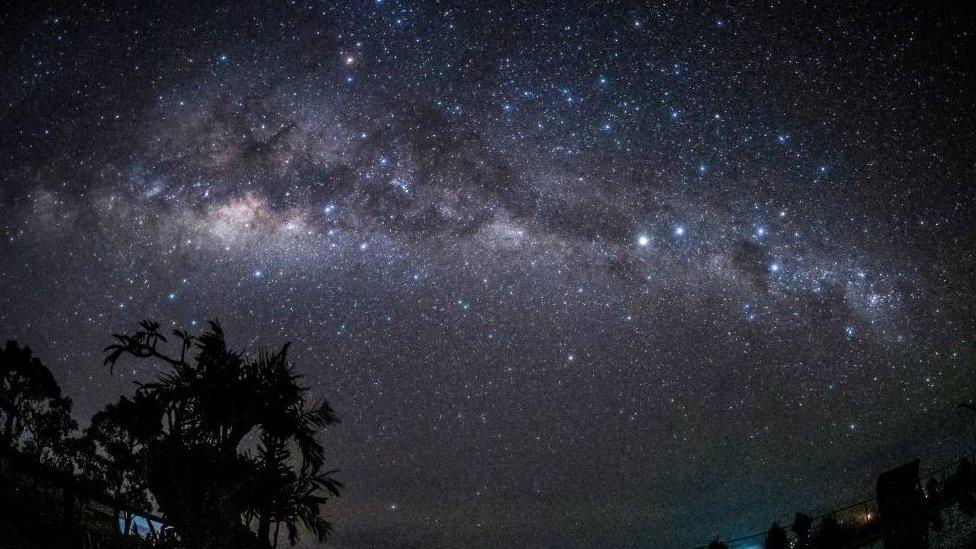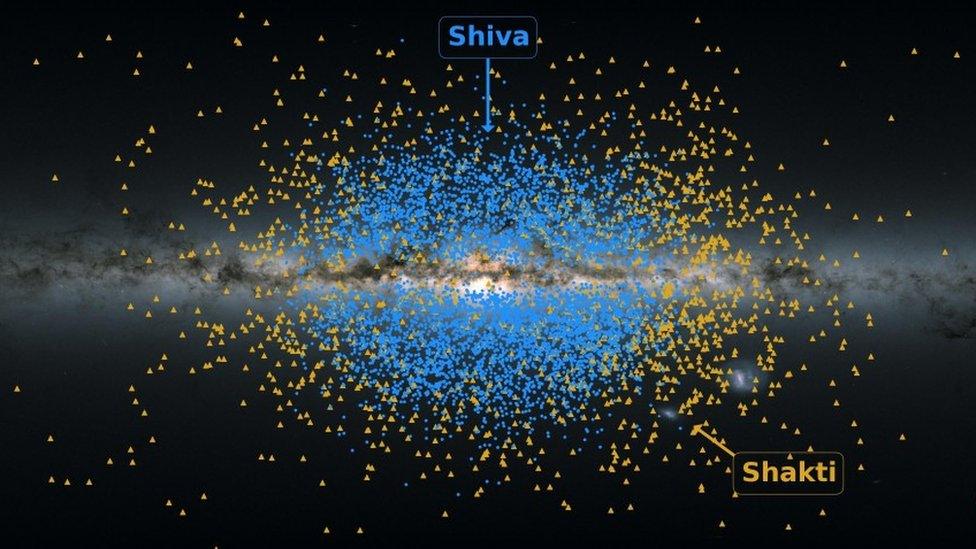ESA Gaia: Telescope uncovers the history of the milky way galaxy
- Published
- comments

Have you ever seen the Milky Way at night?
A European Space Agency (ESA) telescope has discovered two ancient 'threads' of stars that wove together to form our home - the Milky Way.
ESA's Gaia telescope identified the two threads of stars as 'Shakti' and 'Shiva'.
The two threads of stars began to weave together billions of years ago, forming the Milky Way we know today.
By using Gaia, ESA can look deep into the past, finding out more secrets about our mysterious galaxy.
What is the Milky Way?

The Milky Way is the galaxy that we live in.
If you live in a dark place, away from light pollution, you might be able to see it on a clear night.
It's in a disc shape, with spiral arms - and Earth sits inside one of the arms. It's called the Milky Way because of the way it looks in the sky - it inspired a Greek myth that a goddess put milk up into the sky.
Gaia was launched into space in 2013. It observes stars, planets, comets, asteroids and quasars.
It was sent up by the European Space Agency - which is basically Europe's version of Nasa.
It gets its name from an acronym - Global Astrometric Interferometer for Astrophysics. In Greek mythology, Gaia is also the personification of Earth.
What's the new discovery?

You can see the two strands of stars here - they combined together to form the Milky Way we know today
Using Gaia, researchers worked out the history of different stars' orbits. They also looked at their chemical composition - which is basically what they're made of.
They found two 'streams' - which they named Shakti and Shiva, and they think these two strands of the Milky Way merged together as the galaxy was developing.
